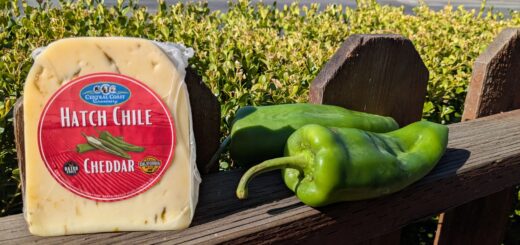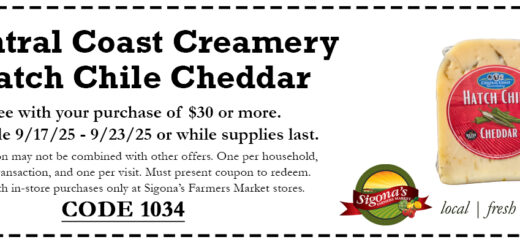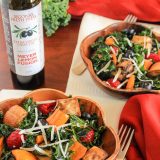A New Must-try: Farm Fresh Pastured Eggs from Pescadero
A New Must-try: Farm Fresh Pastured Eggs from Pescadero
Nutritious, delicious and new to Sigona’s, these farm fresh (and we mean fresh) pastured eggs are so good, you’ve got to try them.
By Carmelo Sigona
 We’ve heard your requests for pastured eggs, and we’ve delivered! Starting today we’re welcoming Wattle & Comb, a new vendor with farm-fresh pastured eggs from a small flock of hens raised in Pescadero, Calif. These eggs are absolutely fantastic!
We’ve heard your requests for pastured eggs, and we’ve delivered! Starting today we’re welcoming Wattle & Comb, a new vendor with farm-fresh pastured eggs from a small flock of hens raised in Pescadero, Calif. These eggs are absolutely fantastic!
We have a limited quantity of eggs, but as an introductory special, Sigona’s and Wattle & Comb are offering you a free half dozen of fresh pastured eggs with your coupon when you spend $30 or more. The small flock of hens will do all they can to make enough eggs, but we may run out from time to time; we want everyone to enjoy these egg-cellent (couldn’t resist) eggs, so the coupon is valid for three months; if we’re out when you come in this week (June 29-July 5, 2011), we’ll give you another coupon good for a half dozen eggs (when we have them) when you spend $30 or more in the next three months.
Pick a Good Egg
Do you know what “pastured eggs” means? In short, it means the hens are raised outdoors — with access to coops if they so desire — which allows them to roam freely, eating what grows on the land, such as grasses, seeds, grains and bugs…just as nature intended. It’s better for the bird, it’s better for the eggs and it’s better for you!

“The yolks of pastured eggs just have a more high-vibe,” said Laura Stec, executive chef for Pescadero Foods, which bring us Wattle & Comb eggs.
When compared to factory farm-raised eggs, did you know that farm-fresh pastured eggs have been found to have:
- Higher omega-3 fatty acids
- Less cholesterol (some studies show pastured eggs have up to 1/3 less cholesterol)
- Higher amounts of vitamins A, E & B12
- Higher amounts of folic acid, beta-carotene and essential fatty acid
“People just want to feel good about their food, where it comes from and how it came to be,” said Janina Pawlowski, founder & CEO of Pescadero Food’s Wattle & Comb eggs and who has raised her heritage hens since day one on her pasture in Pescadero. “People want to be educated about their food and to know what they’re eating isn’t harming the animal, the environment, their family, their employees, and that it’s not dangerous.
“It’s impossible not to think that the treatment of an animal wouldn’t affect an animal’s health, well-being and ultimately the flavor you get in the end,” said Janina. “Years ago, people considered it a luxury to eat a day-old egg, and I want to reintroduce people to the experience of a pastured, truly fresh egg again.”
There are many interesting facets to Janina’s story, especially about how she went from being the co-founder of E-Loan (yes, the E-Loan, and she really is the co-founder) to raising chickens in Pescadero, but that’s another story for another time.
What we really want to tell you about now are these fantastic eggs.

Janina Pawlowski (on tractor) with her daughter and Laura Stec (standing) out in the pasture in Pescadero where the Wattle & Comb hens roam freely, grazing from the land.
Farm Fresh Means Farm Fresh
The Wattle & Comb eggs at Sigona’s will be just days old, if not just one day old, when delivered to our stores, and you can’t beat a fresh egg. Aside from being nutritious, they’re incredibly delicious. Anything you put a pastured egg in tastes better – Janina said she especially loves the homemade mayonnaise and meringue she’s made with the eggs, and Laura Stec, executive chef for Pescadero Foods, says their performance is simply richer and creamier.
“We call them egg jewels,” said Laura. “You’ll be amazed at the color of the yolk and the difference in taste between an egg that’s traveled one day when compared to one that’s traveled more than 10 days. Some factory-farmed eggs may sit on a shelf or in your fridge for 50 days before you use it. Just as with other fresh fruits and foods, like olive oil or peas, whose sugar starts to turn to starch right after it’s picked, they start to decline after they’re picked, or in this case, laid.”
A healthy dish I’m morphing is a layered little dish made from quinoa and a layer of greens with a poached egg on top. When you break the yolk, it drizzles down through the dish, infusing it with a rich, creamy flavor that you just can’t beat. To the other extreme, when you want to impress and splurge, a simple carbonara pasta is killer with the richness of these eggs. I have more pastured egg recipes on our blog.
What Came First, The Chicken or the Egg?
With a nod to her agricultural roots (Janina grew up among farms in rural Rochester, N.Y., and, in addition to her triple major MBA, she has a degree in agricultural economics from Cornell University), she has taken on the food system, spearheading projects and operations such as PLANT! and Souper Kids!, and now with her hens in Pescadero for Wattle & Comb.
Janina raises three breeds of heritage chickens, meaning the breeds haven’t been cross-bred for more than 50 years, similar to the definition of heirloom produce. Janina chose these three breeds because they do well in the coastal prairies and climate of Pescadero, surrounded by rolling hills and Redwood forest. They each lay a different color of egg, too, though the eggs taste the same:
-

Wattle & Comb has three heritage breed hens: (top) Rhode Island Red, (middle) Barred Rock and (bottom) Amerucana.
Barred Rock hens lay brown eggs, and a lot of them. They’re also good meat birds as they gain weight fairly quickly. Barred Rock chickens have beautiful feathers that are often dyed and used in hair accessories and for feather beading into hair (something catching on again as of late, thanks to Aerosmith’s Steven Tyler and other celebs who think feathers are fabulous).
- Rhode Island Red: this breed of chicken has magnificent, shiny feathers. Rhode Island Red hens also lay brown-colored eggs. Something Janina noticed while watching the flock is that while other breeds head for cover, the Rhode Island Red loves to stand out in the rain.
- Ameraucana hens lay the blue eggs. They also have blue legs and feet. The breed tends to lay eggs early, but they lay fewer eggs. Janina noticed these birds seem to be more wild and will do anything to escape.
Janina’s flock is currently 190 members strong. She’s finishing up portable chicken trailers which act as coops (they’re more like condos) and as a way to transport the chickens to other areas of the 153-acre pasture every few days. They rotate positions in the field to let the foliage regrow because chickens eat everything in their path. Just as with grass-fed cows and other ruminants, what chickens eat adds flavor to the chicken and the eggs because grasses and seeds have terpenes, the same compounds found in herbs & spices.
Janina and other pastured-egg farmers in the area add to the chicken’s diet with whole and/or organic grains. Plus, her chickens are 100 percent antibiotic and hormone free.
“I’ve done much research on grains and other chicken feed to make sure I get what’s best for the chickens and their pasture diet,” said Janina. “I discovered a book written in 1857 called On the Management of Poultry by Walter B. Dickson that I’ve found helpful in many ways, and I know that it’s of course most beneficial to feed chickens what’s native to where they’re from. All the chicken farmers in the area are struggling with the cost of quality feed at the moment, but we all want what’s best for the chicken and the egg.
The book On the Management of Poultry also led Janina to the name Wattle & Comb where it reads:
“When a hen is near the time of laying, her comb and wattles change from their previous dull hue to a bright red, while the eye becomes bright, the gait more spirited, and she occasionally cackles for three or four days.”

No, they’re not painted or dyed. Different breeds of hens lay different colors of eggs. The taste is all the same.
I just love that – Janina has learned so much about the chickens, the breeds and their personalities. I could go on and on! It’s also her dedication to an understanding of food, access to it, where it comes from and the environment that interests me, and it’s what led her to bring on Laura Stec.
Laura takes a culinary approach to the projects, and as an individual with an extensive and impressive history in the world of food and environment, her vision for changing our approach to food is inspirational.
“I was part of the food and environment movement before it was sexy,” said Laura. “I founded one of the first U.S. food and environment educational programs in 1988 called Eco Eaters that illustrated one way to change the environment is to start with your dinner plate. We emphasized the connection between food and environment, emphasizing how food is grown and where it comes from because most people feed their stomachs, but it’s not enough.
“The process of being truly fed is more than just filling the stomach,” Laura continued. “A lot of people are overeducated about food, but still undernourished. I teach people that healthy food starts with a healthy environment. Promoting pastured eggs and their benefits fits right into that idea.”
The partnership between Janina and Laura has led them to take on the darkest food beast of all, the school lunch program. The pair hopes to improve school lunch by matching locally grown produce to locally made products. You can learn more about their efforts on the PLANT! website.
For now, we’re helping them get started by offering these eggs: these delicious, nutritious, beautiful, fresh-from-the-farm eggs. Please come take advantage of our free offer, and remember, we have a limited quantity, so thank you for understanding it’s first come, first serve when the eggs are in store and available.










